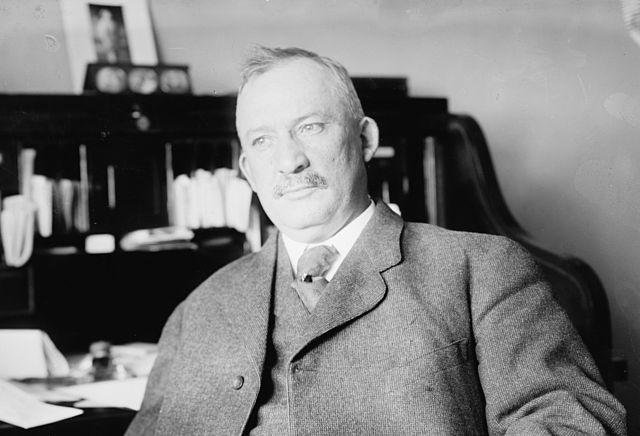National Defense Act of 1916
The National Defense Act of 1916, Pub. L.Tooltip Public Law 64–85, 39 Stat. 166, enacted June 3, 1916, was a United States federal law that updated the Militia Act of 1903, which related to the organization of the military, particularly the National Guard. The principal change of the act was to supersede provisions as to exemptions. The 1916 act included an expansion of the Army and the National Guard, the creation of an Officers' and an Enlisted Reserve Corps, and the creation of a Reserve Officers' Training Corps. The President was also given expanded authority to federalize the National Guard, with changes to the duration and the circumstances under which he could call it up. The Army began the creation of an Aviation arm, and the federal government took steps to ensure the immediate availability of wartime weapons and equipment by contracting in advance for production of gunpowder and other material.
Rep. James Hay of Virginia, Chairman of the House Committee on Military Affairs.
Rep. Julius Kahn of California
William Oxley Thompson, Ohio State University President, ROTC advocate.
William Abram Mann, first head of the expanded and reorganized Militia Bureau.
The Militia Act of 1903, also known as the Efficiency in Militia Act of 1903 or the Dick Act, was legislation enacted by the United States Congress to create what would become the modern National Guard from a subset of the militia, and codify the circumstances under which the Guard could be federalized. It also provided federal funds to pay for equipment and training, including annual summer encampments. The new National Guard was to organize units of similar form and quality to those of the regular Army, and intended to achieve the same training, education, and readiness requirements as active duty units.
Charles Dick, for whom the Militia Act of 1903 was named.
Governor Martin Chittenden unsuccessfully attempted to recall Vermont Militia from New York during the War of 1812.
Secretary of War Elihu Root worked to reform Army after Spanish–American War.
James Parker, first head of Division of Militia Affairs.








